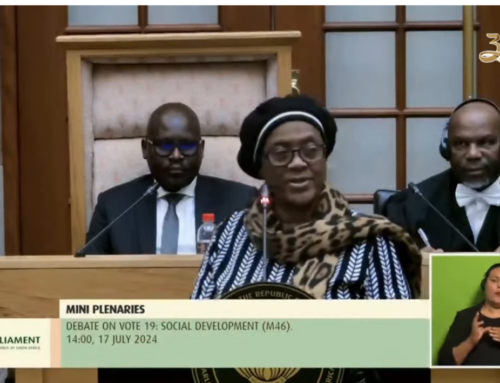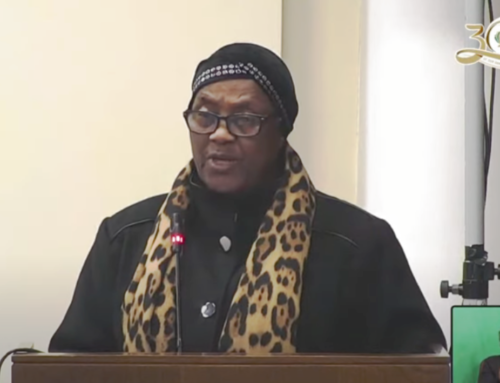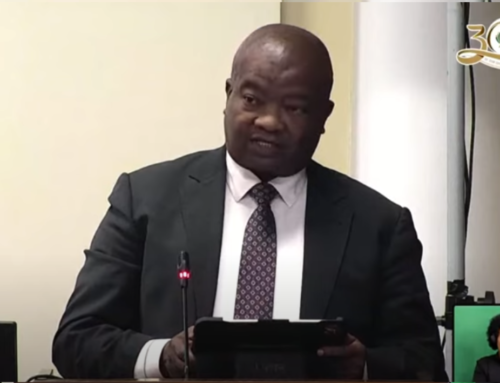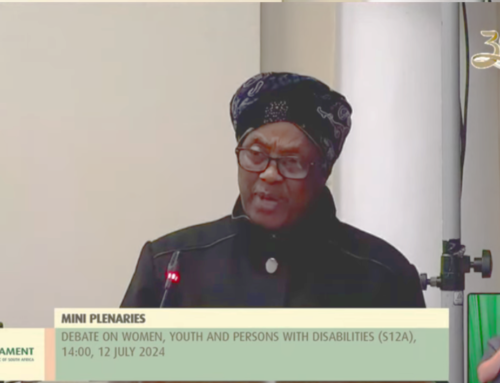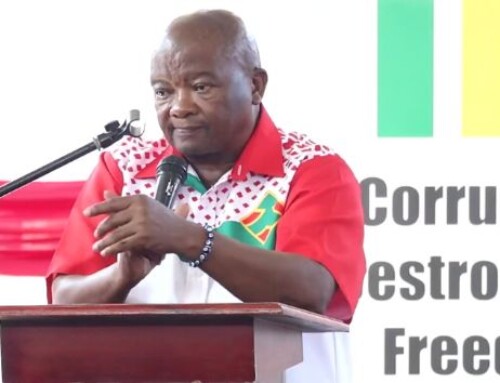Address by Mr Bantu Holomisa, MP (UDM President) to Leaders of the Opposition on uniting the opposition at Mannah Lodge, Kempton Park, Gauteng
Presidents and leaders of Political Parties,
Colleagues,
Ladies and Gentlemen
1. INTRODUCTION
We are gathered here to, amongst others, measure the progress we have made since the advent of democracy in South Africa. We need to assess whether we, as a Nation, are still on track in fulfilling the original agenda, which is to improve the lives of all South Africans.
There have been some positive changes, but we are far from reaching the ideal that is described in our Constitution. We unfortunately see far too many incidents of racism, ethnic tendencies, nepotism, corruption, violence, crime, religious intolerance and the widening gap between the rich and the poor… the list goes on.
2. ASSESSING THE CURRENT POLITICAL LANDSCAPE
The United Democratic Movement (UDM) believes that multi-party democracy is our only defence against one-party dominance and dictatorship – we are finely balanced between opportunity and disaster.
Looking at the 2009 election results, we notice that the African National Congress (ANC) lost ground in eight out of the nine provinces. Unfortunately, most opposition parties failed to capitalise on this and the ANC managed to absorb its national setback with a very strong showing in KwaZulu-Natal. It is vital that we, as opposition parties, correctly analyse the State of the Nation and the status of the Multi-Party Forum in order to develop the best strategies for electoral victory in 2014.
3. HISTORY OF POLITICAL PARTIES WORKING TOGETHER
You will recall that we established the first version of the Multi-Party Forum in 2008. This forum included parties from both inside and outside Parliament. A number of issues were discussed and agreed
upon, those are:
a. Party funding;
b. Electoral reform;
c. The Independent Electoral Commission’s (IEC’s) level of independence;
d. The decision making powers of Political Liaison Committees (PLCs);
e. The practical side of elections and the way in which they are run;
f. The role of the media (e.g. the SABC and ICASA);
g. Creating an enabling environment of participatory democracy and;
h. Intra- and inter-party democracy.
For more details on the aforementioned, I have brought copies of the:
“Draft resolutions of the Multi-Party Forum with specified long and short-term goals as agreed upon at the meeting of the Multi-Party Forum with the Independent Electoral Commission on 7 April 2008”.
Sadly most of these resolutions could not be implemented, because the ruling party and its IEC simply did not want to come to the table and talk sense. It is clear that we cannot continue to bat on this wicket; we need to take a different approach lest the outcome of this process ends in the same way.
4. LESSON LEARNT FROM 2009 ELECTION
The results showed that the South African electorate wants a system where two large parties, of similar strength and size, compete for the mandate to govern. This proved to us that we should explore ways in which we could bring about such a balanced party political system.
5. WHY ARE WE HERE?
The discussions we have had thus far, have led us to the point where we must now move forward and give the voters a clear picture of how we want to work together in future. We need to interrogate the various options on the table and be clear about what we want to present to the voters.
Political leaders have made various statements and phrases like: “uniting the opposition”, “merging”, “cooperating”, “coalition”,“alternative”, “alliance” and “realignment” were bandied about. People have different understandings of what these concepts mean.
In the meantime expectations have been raised with the South African electorate. People, who saw us working together on issues like the Information Bill, expect us to formalise our relationship.
We have the challenge of finding each other, considering that we have different ideologies and philosophies. The advantage is that the precedent has been created in different places in the world where, political parties with different interests, work together without losing their identities. We have a perfect local example. Look at the ruling party, where communists, capitalists, traditionalists, liberals, unionists and even their old foe, the National Party, sit at the same table and speak with same language.
We cannot deny that we have common concerns, amongst others: the economy, corruption, service delivery, unemployment, poverty, education, health, the environment and civil disobedience. I hope that we will leave this meeting today having agreed on how we will walk the road to 2014 and which route we will take. How will we “unite the opposition” and which model and vehicle will we use? What would our common language and message be? Would we be able to accommodate other stakeholders, such as civil society, labour, business, youth formations, traditional institutions, faith based organisations, special interest groups and the public at large, and how we will achieve this?
6. THE WAY FORWARD
The UDM agrees that we should formalise our cooperation. We cannot afford the same mistake, where each party goes it alone (as we did in the past), because it would be a waste of valuable time and resources. We would miss an opportunity to make the paradigm shift needed to ensure that our Country and her people prosper. The UDM proposes that opposition parties contest the 2014 National and Provincial Elections under one banner, but that we retain our identities.
This can be done by forming an alliance (we describe an alliance as a pact, coalition or friendship between two or more parties, made in order to advance common goals and to secure common interests). An alliance agreement, governing cooperation between the different stakeholders, should be drafted as soon as possible with a clear mission, vision and objectives and it should also define the role of each stakeholder. This would enable us to pursue a set of agreed upon goals, whilst each party retains their independence.
Some of the benefits of such an alliance include, but are not limited to:
a. Substantially improving competitiveness;
b. Sharing competencies; and
c. Bundling competencies and resources across provinces.
However, the success of such an alliance depends on our ability to create a win-win outcome for all stakeholders. Formalising the current arrangement would guide our interaction with the public, because the current configuration creates confusion.
Should there be consensus to form an alliance, as we proposed earlier, we should establish an umbrella body where all stakeholders contest the 2014 elections under one banner, without losing their identities.
To achieve this we will have to register this umbrella body as a political party with the IEC. We must strive to be as inclusive as possible and we should champion equality and transparency:
One thing is certain, if we agree on this course of action, we have an enormous task ahead of us and very little time to accomplish our goals.
The responsibility of making this “project” work cannot rely on only one party. We will have to be practical and establish a Committee of Parties, that will act as a steering committee, which is mandated to among others:
a) Facilitate the development of a name, logo, colours, vision, mission, core principles, etc.;
b) Draft a memorandum of understanding/constitution/contract between stakeholders;
c) Give a platform for stakeholders which they can use to reach consensus on issues of common interest;
d) Coordinate, consult and interact with all stakeholders;
e) Develop a strategy of how to approach organisations and bodies outside the sphere of politics;
f) Develop mechanisms that will give structure to stakeholders’ participation in the 2014 elections, for example the compilation of candidates lists, fielding party agents, etc.;
g) Develop a project plan with timeframes and deadlines;
h) Develop a model for fundraising and putting the necessary checks and balances in place;
i) Develop a communication and marketing strategy;
j) Design an organisational structure, with subcommittees;
k) Suggest a decision-making/leadership structure;
l) Develop a mechanism to resolve deadlocks;
m) Suggest an administrative support structure;
n) Convene a plenary of stakeholders as and when necessary.
7. CONCLUSION
We have heard several points of view today, and the UDM hereby tables its own. We are ready to contribute to the debate that follows.
We must however remind ourselves that time is of the essence. South Africans are waiting to hear what the future holds. We must resolve on what we are going to do and we must do it soon.
In the final analysis, our success depends on our ability to pursue electoral strategies that will help us develop a compelling vision for the future and revive public interest in politics.
We should focus on that which unites us and not that which divides us – our common goal should be fulfilling the original agenda, which is to improve the quality life of all South Africans.
Thank you.




